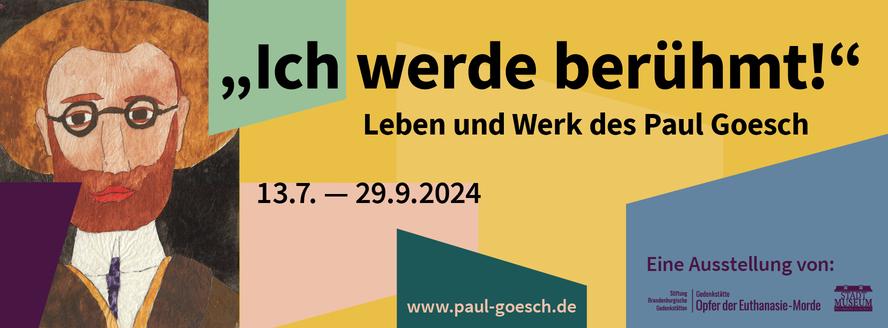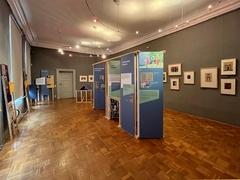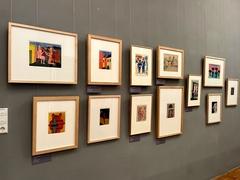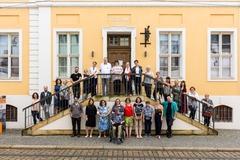Temporary exhibitions
„Ich werde berühmt“ – Life and Work of Paul Goesch
More than 30 original paintings by the artist Paul Goesch (1885 – 1940) can be seen for the first time in Brandenburg an der Havel! Our exhibition tells the life story of the painter and architect, who belonged to the artistic avant-garde of the Weimar Republic. Due to his mental illness, Paul Goesch spent a large part of his life in various psychiatric institutions from 1921 onwards. In 1940, he was murdered by the National Socialists in the „Euthanasia“ killing centre in Brandenburg an der Havel.
The exhibition presents Paul Goesch's work against the backdrop of his time and focuses on the persecution of mentally ill people under National Socialism. It also raises questions about the social perception of mentally ill artists in the present day.
The exhibition's curatorial team includes 20 volunteer exhibition organisers who have been involved in all important content and design issues. The project is being realised by the Memorial to the Victims of the Euthanasia Murders, the Brandenburg an der Havel City Museum and the „Sonnensegel“ children's and youth art gallery.
The exhibition was opened on Freitag, 12 July 2024 with more than 200 guests. The two directors, Dr. Sylvia de Pasquale and Anja Grothe, hosted the ceremony, which was moved to St. John's Church due to the weather. They introduced the speeches by State Secretary Tobias Dünow from the Ministry of Science, Research and Culture, Lord Mayor Steffen Scheller and Dr. Sonja Begalke, a specialist from the Foundation Remembrance, Responsibility and Future [in German: Erinnerung, Verantwortung, Zukunft (EVZ)], as well as Kathleen Tesmer, Birgit Klaus and Jutta Melber as representatives of the voluntary group of curators.
In his welcoming address, Lord Mayor Steffen Scheller spoke about the artist's life:
„„The expressionist painter and draughtsman Paul Goesch is without question a special artistic personality of his time. His works are characterised by their powerful expressiveness, strong colours and abstract forms. Not only, but above all, through his special view of things, which his decades-long mental illness brought with it. His work enabled him to make himself understood by the world around him and helped him to deal with his illness more easily.““
The program was framed by Shady Darling and Tom Georgel from Berlin with music from the 1920s. In unexpectedly beautiful weather, more than 200 guests gathered in the courtyard of the Frey-House for a reception and finally a tour through the exhibition. In the rooms on the upper floor of the baroque Frey House, the volunteer curators accompanied the guests and were available to answer their questions.
The evening concluded with a return to the Johanniskirche, where the theatre group from the Otto-Tschirch-Secondary-School, led by Michelle Schmidt and Maren Werner, performed an impressive play about Paul Goesch, which focused on the life and murder of the artist and received enthusiastic applause.
The exhibition can be seen until 29 September 2024 during the opening hours of the City Museum in the Frey-House.



